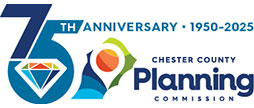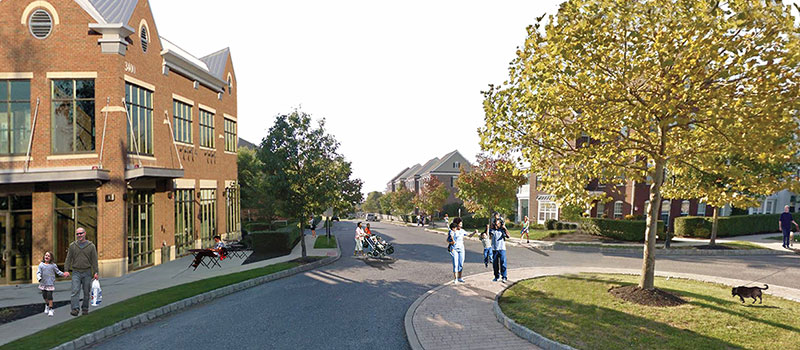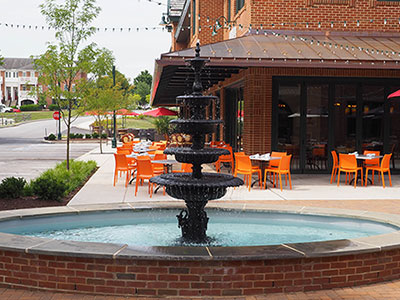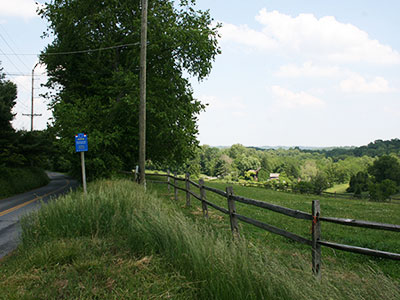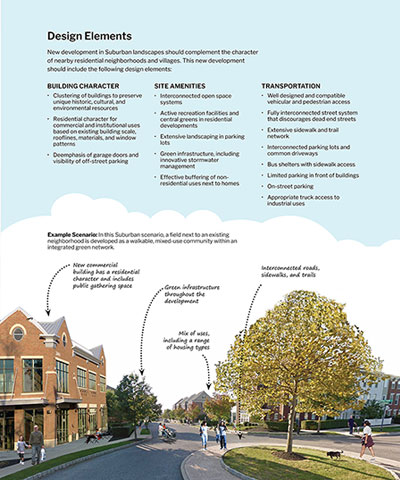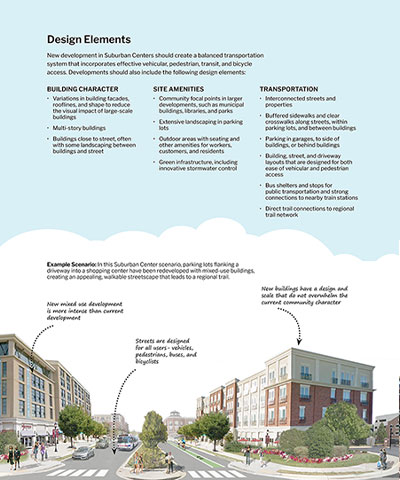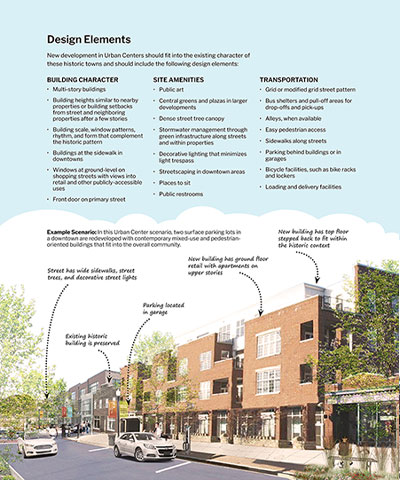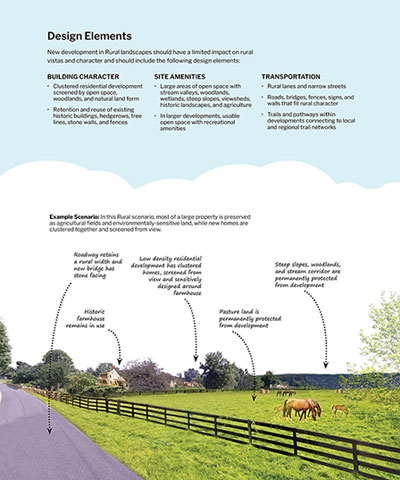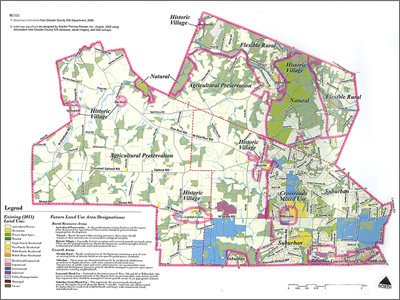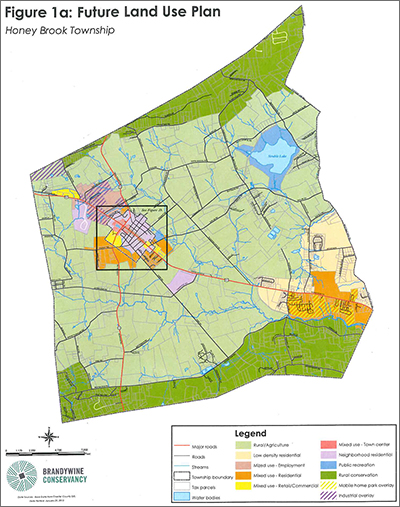With smart growth, new development occurs in walkable locations near existing infrastructure.
How it Works
Smart growth is a planning approach that balances growth and preservation through conservation and development strategies that protect the natural environment, preserve farmland and open space, and make attractive, economically competitive, and socially diverse communities.
The foundation of smart growth strategies is a set of ten planning principles based on the experience of thriving communities around the nation:
- Mix land uses.
- Take advantage of compact building design.
- Create a range of housing opportunities and choices.
- Create walkable neighborhoods.
- Foster distinctive, attractive communities with a strong sense of place.
- Preserve open space, farmland, natural beauty, and critical environmental areas.
- Strengthen and direct development towards existing communities.
- Provide a variety of transportation choices.
- Make development decisions predictable, fair, and cost effective.
- Encourage community and stakeholder collaboration in development decisions.
When municipalities adhere to smart growth strategies, they can create new and maintain existing attractive, convenient, safe, and healthy communities.
Open space preservation is a key component of smart growth policies.
Landscapes3, the county's comprehensive plan, is structured around smart growth.
Benefits
Community Building
Human-scale design and quality construction of mixed-use development and compact building design promotes safety, visual appeal, and compatibility among uses and users. A mix of housing types and price ranges helps meet the needs of an entire community.
Air Quality
Compact development with a mix of uses and transportation choices makes it safe and convenient to walk, bicycle, or take public transit instead of driving. These choices reduce the need for motor vehicle travel, which reduces air pollution.
Water Quality
Compact development and open space preservation reduce the amount of paved surfaces and allow natural lands to filter rainwater and runoff before it reaches drinking water supplies.
Redevelopment
Directing development towards existing developed areas and existing utilities encourages redevelopment of underutilized and abandoned properties that may be generating negative perceptions of a community, lowering property values, and harboring environmental contaminates.
Fiscal Efficiency
Directing new development towards existing areas and optimizing the use of existing and prior public infrastructure investments results in efficient use of public resources.
Healthy Living
Mixed-use communities designed for public transit, walking, and cycling contribute towards reduced lung and heart disease, obesity, diabetes, and other chronic health conditions.
Preservation
By concentrating development and encouraging open space preservation, smart growth helps preserve much of the county's natural and historic character.
Mixed uses and diverse housing are important elements of smart growth. Landscapes3 — suburban design elements
With smart growth zoning, new development is directed towards existing developed areas. Landscapes3 — suburban center design elements
Design standards can help new development fit into the local community. Landscapes3 — urban center design elements
Preserving rural character and open space is important for smart growth. Landscapes3 — rural center design elements
Get Started
A comprehensive plan is the first means of implementing policies that promote smart growth strategies. Creating or updating an effective plan can be achieved through a community-or region-wide discussion that examines development challenges and evaluates current and alternative growth strategies. A collaborative process can build a consensus for a community's vision on how and where to grow. Once the vision is in place, clear short- and long-term goals as well as detailed policy changes that integrate the ten smart growth principles are needed for effectiveness. Although the route to achieve smart growth will be different in every community, a comprehensive planning approach provides the path to promote efficient and sustainable development, stimulate redevelopment opportunities, optimize prior infrastructure investments, protect private property rights, and support local choice.
Once the overall smart growth policies are expressed in the comprehensive plan, municipalities primarily implement smart growth through their zoning ordinance, although the subdivision and land development ordinance, Act 537 sewage facilities plan, official map, open space preservation policies, and many other municipal actions play a role.
Generally, the zoning ordinance should:
Encourage Mixed-Use
Communities can create opportunities to retrofit single-use commercial and retail developments (e.g. declining retail malls or office parks) into walkable, mixed-use neighborhoods by integrating multiple complementary uses such as residential, civic, educational, or hotel uses. Using zoning with bonuses and tax and other incentives can encourage developers to retrofit with a balanced mix of uses. Related tools:
Mixed-use Development
Greyfield Redevelopment
Brownfield Redevelopment
Office Park Redevelopment
Direct Development
Zoning should reflect a current comprehensive plan that concentrates future development, encourages reinvestment in existing infrastructure, and facilitates the rehabilitation of historic buildings. Generally, new development should be encouraged in and near existing developed areas that have existing infrastructure and community facilities. Related tools:
Adaptive Reuse
Growth Boundaries
Infill Development
Rural Center Zoning
Transit-oriented Development (TOD)
Allow Diverse Housing
Updating a zoning ordinance to allow for a range of housing types makes it possible for senior citizens to stay in their homes, young people to afford their first home, and families at all stages of life to find an attractive and affordable home. Related tool: Housing Diversity.
Incorporate Design Standards that Promote Walkability, a Sense of Place, and Compact Building Design
Zoning ordinances can incorporate design standards that help a community achieve smart growth. This can be done by requiring new development to be pedestrian, bicyclist, and public transportation friendly; by having buildings reflect the existing community and historic character with façade variations, location requirements, and design features; and by requiring special amenities, such as central greens, streetscaping, and prominent building features.
Landscapes3 highlights a variety of special design elements for different types of communities around the county, and the Planning Commission's Urban Centers Landscapes Design Guide and Suburban Centers Landscapes Design Guide provide more details on potential zoning approaches to improve development design.
Preserve Open Space, Agriculture, and Natural Areas
A key part of smart growth is protection of areas identified for preservation in the municipal comprehensive plan. The zoning ordinance can use true agricultural zoning, cluster/open space development regulations, transfer of development rights, and natural features protection ordinances to do this. Related tools:
Agricultural Zoning
Cluster Development
Natural Resource Protection
Transfer Development Rights (TDR)
Considerations
Public Engagement
Public involvement and education at the beginning of the development process helps reduce resistance from citizens towards compact development, particularly if the community agrees that this is necessary to have preservation. There may be resistance from many community members on having additional development near them.
Cooperation of Partners
For truly effective smart growth, municipalities will need to work with a variety of partners to get the best results possible. These will include local sewer authorities, water providers, public transportation providers, PennDOT, conservancies, and others.
Flexibility
Because development sites are often unique and market conditions vary, municipalities will need to remain flexible in their approach by being willing to adjust ordinances when necessary and to push developers to submit better designs during the development review process.
Municipal Investment
Municipalities can expand on zoning and other regulatory tools by investing in infrastructure improvements or open space preservation to help implement good planning.
Multi-Municipal Planning
Whenever possible, municipalities should work with their neighbors to create a multi-municipal comprehensive plan based on smart growth principles. This often allows very rural municipalities to work with suburban and urbanized communities to direct new growth to the most appropriate locations.
Unionville Area Land Use Plan.
Unionville Area Regional Comprehensive Plan
Smart growth principles are incorporated in the plan by recommending development in or near areas of high density that have existing access to utilities and major roads. The areas designated for growth include Unionville and Willowdale villages and areas adjacent to the Borough of Kennett Square. The plan also designates rural resource areas to protect the region's economic and cultural resources associated with active agriculture, open space, and natural lands. West Marlborough and Newlin Townships and the western portion of East Marlborough are designated as rural resource areas with limited development opportunities. This designation helps Both East and West Marlborough Townships have agricultural zoning in place to regulate development in the Rural Resource areas.
Honey Brook Township and Borough Land Use Plan.
Honey Brook Township and Borough Comprehensive Plan
Honey Brook Township and Borough have participated in joint comprehensive plans since the early 1990s; their most current plan, which embraces smart growth principles, was adopted in 2015. Like the Unionville Regional Plan, the Honey Brook Comprehensive Plan clearly defines growth areas and areas for preservation. The plan promotes the borough as the site for community and economic development where future residential development will be served by public utilities and be located close enough to permit residents to walk to the retail and entertainment facilities on Horseshoe Pike. Beyond the borough the plan designates a majority of the township as rural/agriculture or rural conservation to maintain "…rural character, with particular emphasis on agriculture as a viable way of life." These two municipalities have developed a good working relationship and have incorporated shared uses in their ordinance documents.
